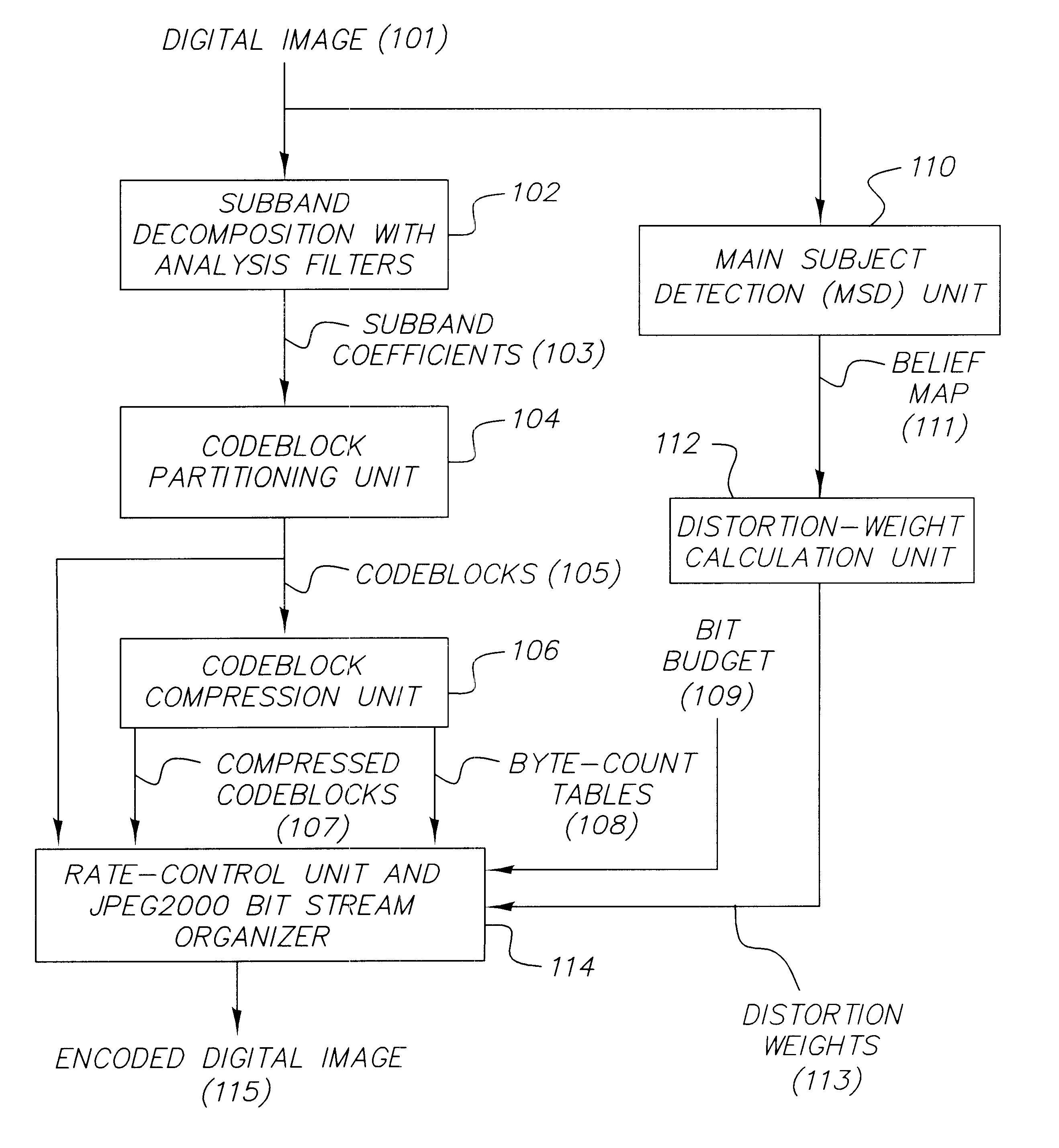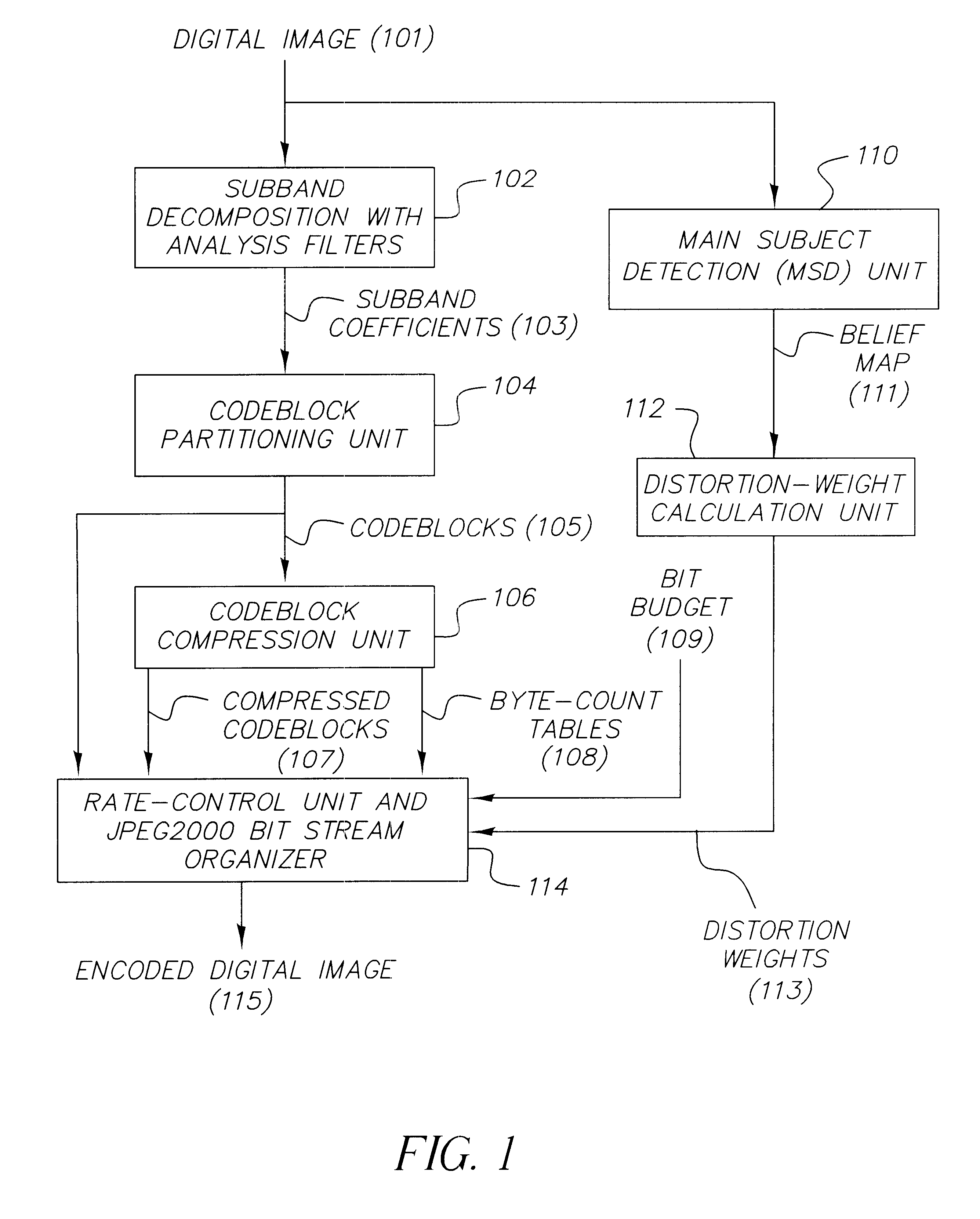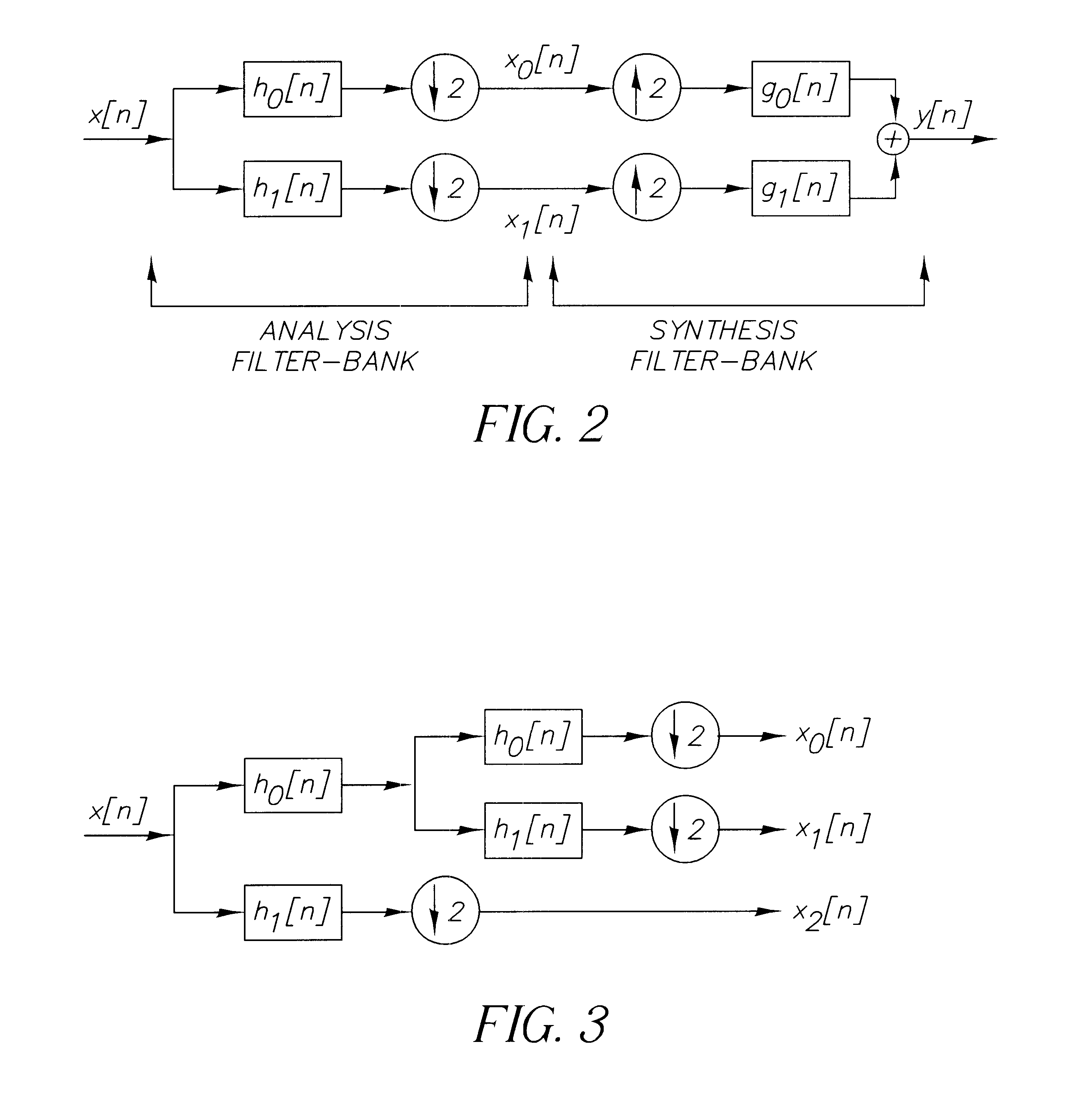Method for utilizing subject content analysis for producing a compressed bit stream from a digital image
a digital image and subject content technology, applied in the field of spatially adaptive quantization in the lossy image compression system, can solve the problem of not having a robust automatic method for generating accurate binary masks, and achieve the effect of maximizing the visual quality of regions
- Summary
- Abstract
- Description
- Claims
- Application Information
AI Technical Summary
Benefits of technology
Problems solved by technology
Method used
Image
Examples
Embodiment Construction
[0017]A preferred embodiment of the present invention is a lossy image encoder based on the proposed JPEG2000 image compression standard. Because the proposed JPEG2000 image compression standard specifies how the decoder shall interpret a compressed bit-stream, there are certain inherent restrictions on any JPEG2000 encoder. For example, in Part I of the JPEG2000 standard, only certain wavelet filters can be used. The entropy coder is also fixed. These methods are described in Information Technology—JPEG2000 Image Coding System, ISO / IEC International Standard 15444-1, ITU Recommendation T.800. Hence, the present description will be directed in particular to attributes forming part of, or cooperating more directly with, the algorithm in accordance with the present invention. Attributes not specifically shown or described herein may be selected from those described in Information Technology—JPEG2000 Image Coding System, ISO / IEC International Standard 15444-1, ITU Recommendation T.800,...
PUM
 Login to View More
Login to View More Abstract
Description
Claims
Application Information
 Login to View More
Login to View More - R&D
- Intellectual Property
- Life Sciences
- Materials
- Tech Scout
- Unparalleled Data Quality
- Higher Quality Content
- 60% Fewer Hallucinations
Browse by: Latest US Patents, China's latest patents, Technical Efficacy Thesaurus, Application Domain, Technology Topic, Popular Technical Reports.
© 2025 PatSnap. All rights reserved.Legal|Privacy policy|Modern Slavery Act Transparency Statement|Sitemap|About US| Contact US: help@patsnap.com



